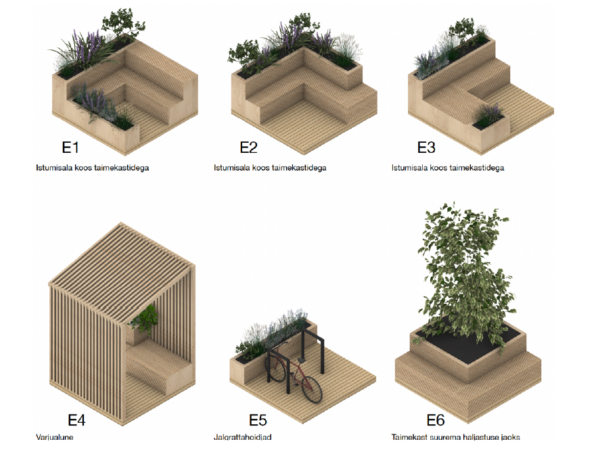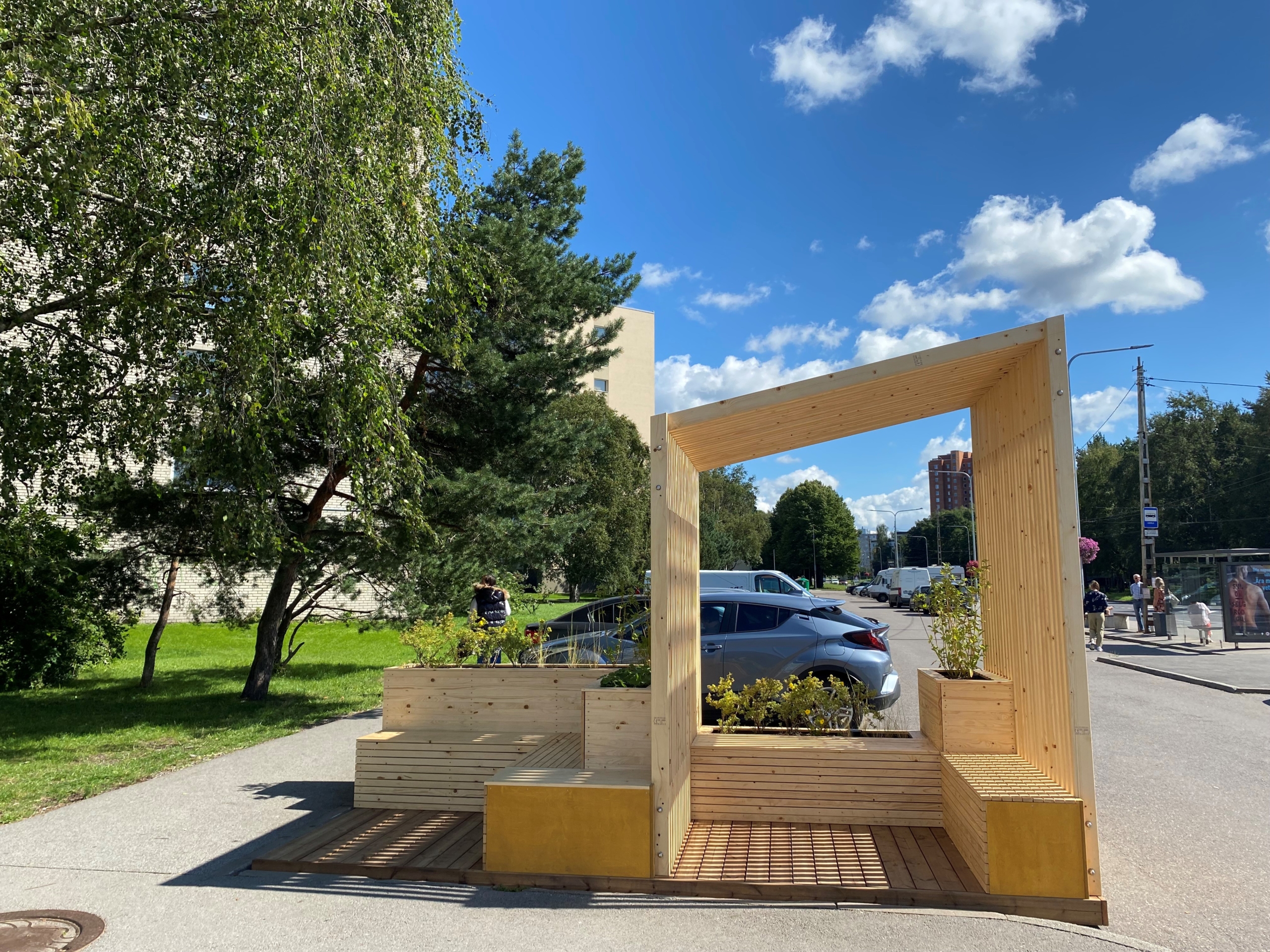THE GREEN CAPITAL YEAR BRINGS ENHANCED DESIGN PARKLETS TO URBAN SPACe
August and September will see a total of eight parklets installed in various locations to liven up urban space. Depending on the location, the parklets will offer a place to sit, a shelter, and bicycle parking. The new parklets will be introduced to the urban space from this week.
According to Tallinn Deputy Mayor Vladimir Svet, the idea behind the parklet is to transform an ordinary spot in the urban area and give it a new purpose: a place where you can simply “park” yourself and sit comfortably, read a book, or have lunch. “This year, we are experimenting with parklet solutions on wide asphalt sidewalks, where illegally parked cars have been a problem,” Svet added. He also stated that this approach can give the space back to pedestrians and enrich the street space with new functions.
Parklets bring functions to urban spaces that are lacking in the chosen locations, providing users with a place to rest, shelter from the sun in sunny spots, and the opportunity to park their bicycles. New elements have been added to the previous design commissioned by the Tallinn City Office – a shelter, bicycle parking, larger green containers – which are used according to the specific location.
The designer of the parklets, Keiti Lige, mentioned that the design of the parklets takes into account a compatible color scheme and the urban context of the specific location. The landscaping of the parklets, designed by Viivian Veski, varies for each parklet, as plant species are chosen to suit the urban environment, microclimate, and lighting conditions. “For example, the parklet near the Estonian Health Museum on Lai Street is landscaped with native vitamin-rich berry bushes and herbs known for their medicinal properties. The color theme of the parklet planned in front of the City Government Building was inspired by the city’s symbolism,” she concluded.
The design of the parklets is modular and linked to car parking spaces – one module covers one parking space – and thus directly related to automotive infrastructure, providing spatial and aesthetic variety.
Parklets are a development of the first pocket parks placed in Tallinn’s urban space last year at the Sakala and Pärnu Road intersection, the corner of Otsa Street and Pärnu Road, and near the museum in Kalamaja.
The “Green Tracks” project, part of the European Green Capital program, is responsible for the parklet installations. The authors of the parklets are Keiti Lige (architect), and Maire Suimets and Viivian Veski (landscaping)
Parklet locations:
• Lai 30
• Tallinn City Government (Vabaduse väljak 7)
• Kibuvitsa-Endla intersection (Kibuvitsa 32)
• Tornimäe Rimi (Tartu mnt 10)
• Suve-Tehnika intersection (Tehnika 15)
• Tööstuse 35
• E. Vilde Street 66A
• Hiiu Rimi, along the Nõmme-Harku bike path (Kitsarööpa Street T9)
The “Green Tracks” project deals not only with citywide, sustainable, and long-term landscaping projects but also with improving spatial quality in places where it can be done without going through lengthy planning processes, utilizing tactical urbanism methods.
Parkmiku moodulid


